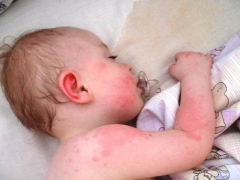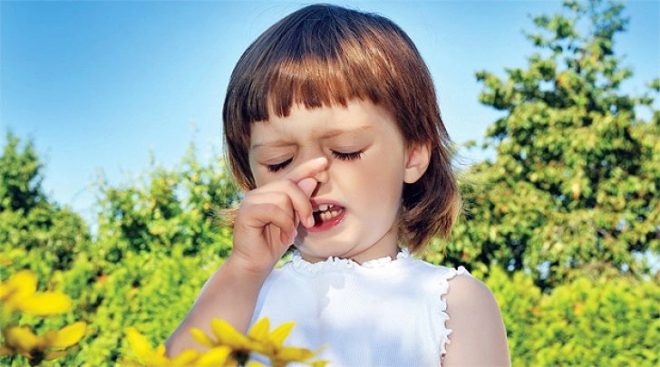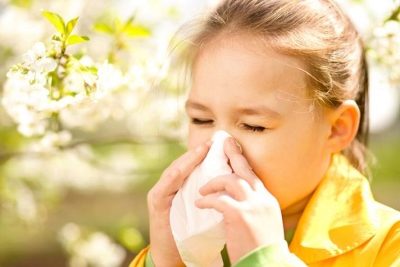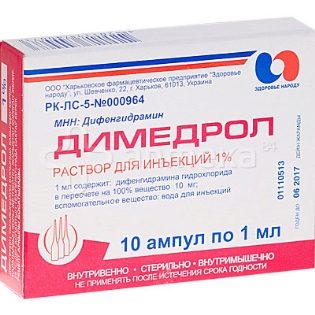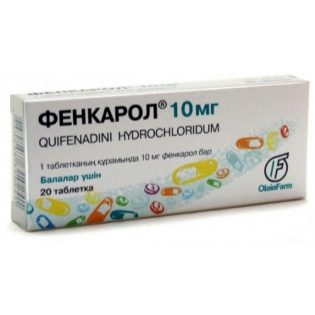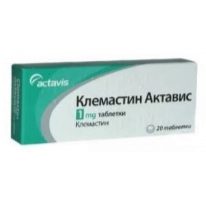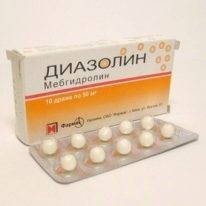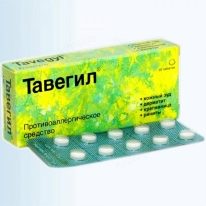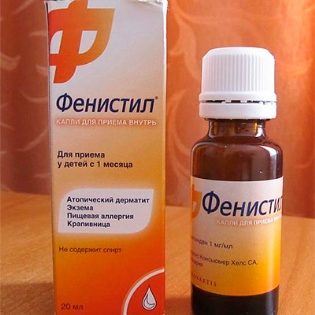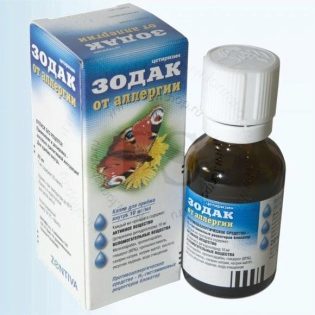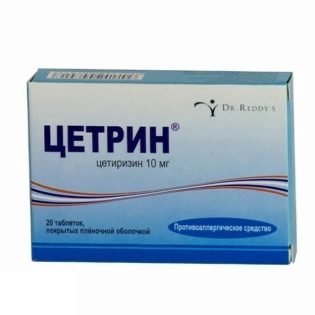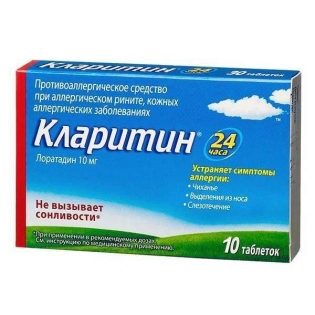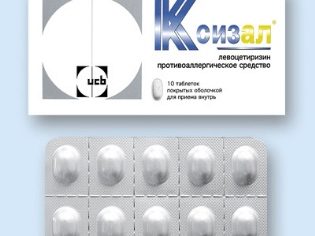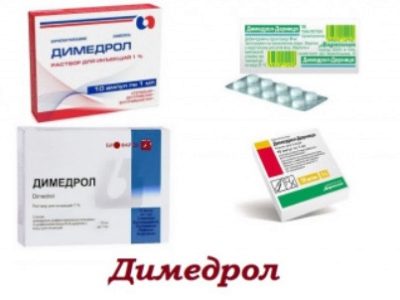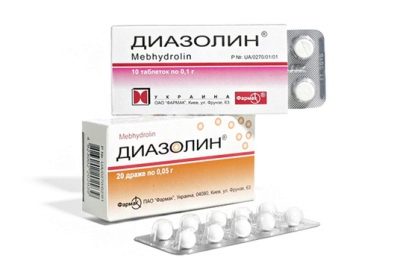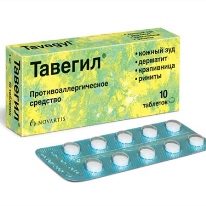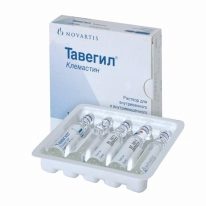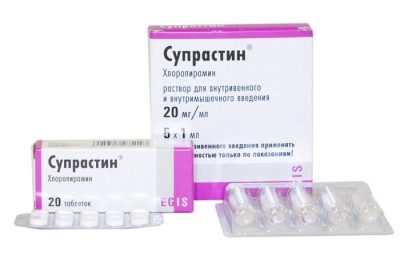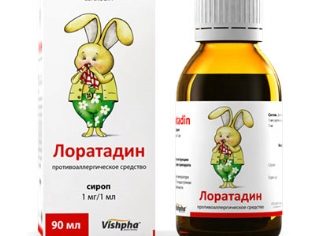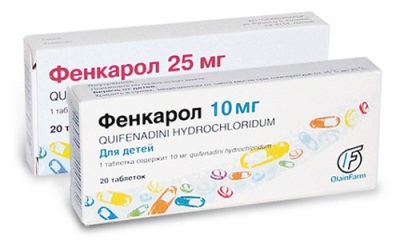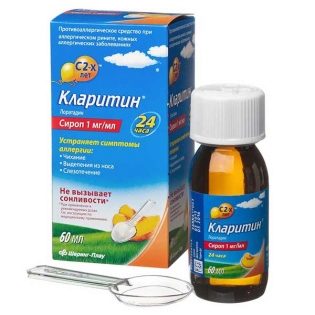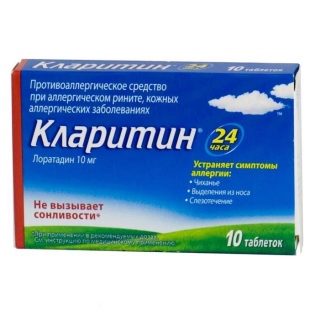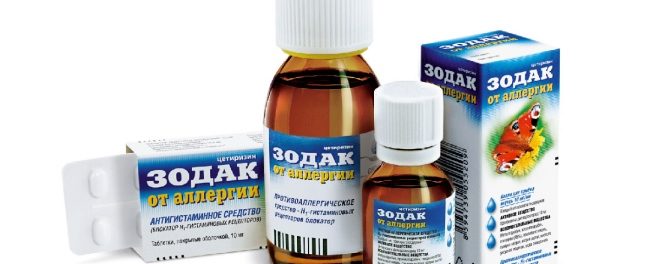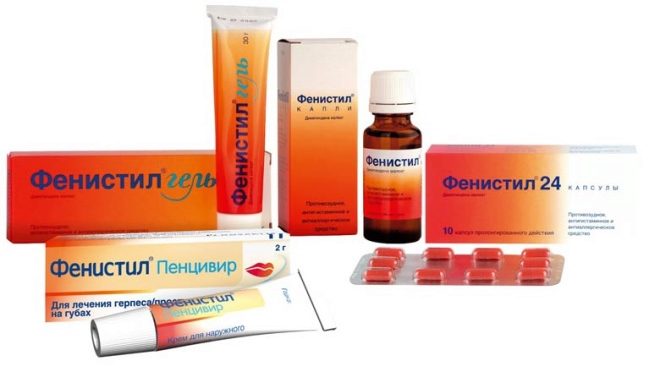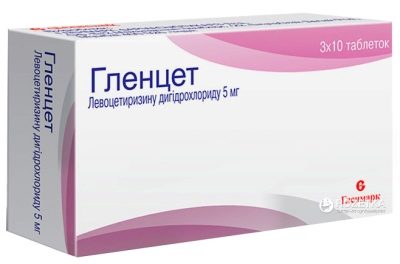Antihistamines for children
The number of children suffering from allergies in one degree or another over the past two decades has increased 8 times. A rare baby does not detect signs of an allergic reaction to one or another pathogen. Some from the very birth react with the disease to certain foods, others to cosmetic care products, in almost 30% of cases children have drug allergies and pollinosis (a reaction to flowering and pollen).
Sometimes there are children who are allergic to several factors at once, including house dust, animals. Increasingly, doctors are forced to state that sometimes children are already born with a predisposition to an unhealthy reaction to an allergen.
Of course, it is best to protect the baby from the product or factor that affects him adversely, but this, alas, is not always possible. It is quite easy to eliminate products harmful to the baby from the menu, to exclude a cat or dog staying in the house, but you cannot deprive the child of the opportunity to walk, even if he is allergic to spring blooms!
To help parents and doctors come modern anti-allergic drugs for children. How to choose a medicine? What should I look for?
We invite you to watch the webinar of the leading allergist-immunologist about childhood allergies and causes.
How to act?
Antihistamines should not be considered a “magic pill”, they do not cure the causes of allergy, but effectively relieve its symptoms, which can be quite painful and dangerous for a child’s life. The action of drugs is based on the suppression of histamine receptors, which are the cause of exacerbation. Histamine is a special neurotransmitter, it has a strong effect on certain functions of the body, as a result of which the symptoms, which we call one succinct word "allergy", develop.
- Inhibition of the respiratory center, bronchospasm, swelling of the mucous membranes of the respiratory tract.
- Change in skin condition (rash, blistering, redness, itching, irritation).
- Disorders of the stomach and intestines.
- Disruptions in the activity of the heart and blood vessels (confused rhythm, dilation of capillaries and larger vessels).
Due to the active substance, allergy preparations successfully suppress the activity of histamine and relieve the child from all the above manifestations.
Often parents are surprised to perceive the fact that pediatricians prescribe such drugs even when allergic manifestations are absent, but the child has the flu or acute respiratory infections. There is nothing surprising in this. Antihistamines are included in the complex treatment of viral infections, are prescribed for laryngitis, adenoids, high fever with SARS. They serve as a guarantee that the baby will not develop a negative reaction to one or another antiviral or anti-inflammatory drug, or allergies will not occur against the background of the disease itself.
Kinds
There are a great many antihistamines, in any pharmacy the pharmacist will offer you a choice of dozens of names and dosage forms. However, parents should be aware that the abundance of brands does not mean a wide variety of actions tablets and ointments.All funds of this group are divided into 4 main generations, because there are four main active substances that form the basis of one or another medicine.
- Diphenhydramine, hifenidin and clemastine hydrofumarate. These substances are included in the "foundation" of drugs form the first generation of antihistamine drugs. It includes the well-known "Diphenhydramine"," Clemastin ","Diazolin», «Tavegil», «Fancarol».
- Cetirizine hydrochloride and dimetidene maleate are substances that form second-generation drugs. These include widely publicized "Claritin", Zodak, "Cetrin", "Fenistil" and etc.
- The third generation of allergy products is an improved version of the first and second. These drugs are spared from numerous side effects and toxicity. These include Telfast, Fexofast.
- The fourth generation of drugs is even more advanced than the first three. This includes Xyzal and Glentset.
In addition, antihistamines are divided into hormonal and non-hormonal. The latter mainly show anti-inflammatory properties. Hormonal medications are more commonly used for skin allergies, for atopic dermatitis, and for urticaria. They usually exist in the form of ointments, gels and creams.
Children's drugs
Despite the huge choice of antihistamines (there are about 300 of them on the drug list), it’s not so easy to choose a drug for a child. The fact is that most allergy medications are intended for adults, in extreme cases, for adolescents who have already turned 12 years old. Which drug is better to choose for a newborn, infant, baby up to a year? The exact answer to this question knows the allergist.
The specialist must be clear about what kind of allergen the child has in the reaction, for this the doctor will conduct special tests, after which he will select the necessary drug and prescribe the necessary dosage.
Usually, children are trying to prescribe a new generation of drugs (third or fourth), since the first and second may cause undesirable side effects (drowsiness, suppression of activity, headaches, changes in blood pressure, respiratory depression).
Children under the age of the doctors do not recommend antihistamines, but sometimes the situation requires it. Usually such means for the smallest are considered drops “Fenistil” and solution “Suprastin”, as well as Zyrtec (from six months).
As for the form of release, the choice here should be based on the desire to minimize the harm. In case of moderate skin reactions, only gel, cream or ointment can be used; for a more serious condition, the use of tablets, capsules, syrup, drops for internal use is required. Antihistamines are various - nasal drops, eye drops, rectal suppositories. Let's look at the most popular tools in pediatric practice.
In this program, allergy doctors will tell us all about childhood allergies and give some advice to parents.
Diphenhydramine
This is the brightest representative of the first generation of allergy drugs. It affects the cerebral cortex, causing severe drowsiness, so this medicine is often mistakenly considered to be hypnotic. But "Diphenhydramine"Often used for these purposes, as well as a strong painkiller. Available in the form of tablets of different dosages, gel, pencils and solution for injections.
This strong medicine is contraindicated for newborns and premature babies. For babies from one to two years, the doctor determines the dosage, from 2 to 6 years, the “starting dose” is 12 mg per day, the maximum dose is 22 mg. Children from six to 12 years, the maximum daily dose should not exceed 50 mg. Children up to one year may use Dimedrol in the form of injections, but only in situations where it is necessary to save the life of the child.
This drug, which is rich in side effects, can be prescribed for severe urticaria, for vasomotor rhinitis, and dermatosis, accompanied by severe itching.In rare cases, the medicine will be prescribed for treating colds, seasickness and Parkinson’s disease.
Diazolin
Even 20 years ago, all the diseases our grandmothers and mothers treated with this medication. Children were given "Diazolin"And from allergies, and colds, and so, just in case, now the attitude to this drug has changed somewhat. More modern antihistamine medications have appeared, but Diazolin is still used in pediatrics. He has no sedative effect like "Diphenhydramine“It doesn’t affect the brain so much.
Available in the form of tablets and round small dragees. Special children's form does not exist. The drug helps well in seasonal allergic rhinitis and similar cough. It can be prescribed for urticaria, chickenpox (as part of complex therapy), conjunctivitis caused by irritants - pollen, household chemicals, other allergens.
The tool can be taken to children who have already turned 2 years old. Up to 5 years, the maximum daily dose of "Diazolin" is 150 mg. Children from 5 to 10 years old give a maximum of 200 mg per day. Children over ten, as well as adults, can take up to 300 mg.
Tavegil
It is also a first-generation drug, but it does not have a hypnotic effect, although the list of side effects is quite large. It is prescribed quite often, as it is an excellent remedy for hay fever, urticaria, pruritic dermatosis. "TavegilIt helps with allergies to medicines, and also removes the reaction to insect bites.
Available in various forms, but only Tavegil syrup and the drug in the solution for injections are ideal for children. Tablets are prescribed rarely. Syrup give a teaspoon twice a day. Injections are administered as prescribed by the doctor also twice a day. The drug can not be used in the treatment of children under 1 year old, the ban on taking pills extends to the age of six.
Suprastin
Perhaps the most famous drug for allergies in our country. This is the first generation antihistamine, which, in addition to effective histamine control, has an antiemetic effect. Often assigned to children with allergies to certain foods, animal dander, seasonal flowering and pollen.
In addition, "Suprastin" is recommended for dermatitis and dermatoses caused by allergens, with insect bites. Medication is also given for allergies of unknown origin, and in children this condition happens quite often. Available in tablets and solution for injections.
The drug can be used in newborns and children of the first year of life only by doctor's prescription. All children, without exception, the dosage is calculated depending on weight and age. Average adequate doses are as follows - from 1 year to 6 years old - one quarter of a tablet three times, from 6 to 10 years old, you can give a child half a tablet. Ten-year and older give, as an adult, 1 tablet three times a day.
Loratadine
The drug of the second generation, which helps to quickly cope with an unpleasant condition with allergic nasal congestion, reactions to flowering, pollen, and other medicines. It is quite effective in almost all types of allergies, and is also used in the treatment of bronchial asthma as an auxiliary drug.
The medicine is produced in tablets and syrup. Children under 2 years old are not recommended. Children from two to 12 years old are prescribed a single dose of 5 mg. Adolescents older - adult dose (10 mg). Children with kidney and liver diseases require a reduced dosage, which the doctor will determine, based on the patient's condition.
Fancarol
Allergy drug of the first generation. Available in tablets of different dosages and in the form of large fragment powder. There is a special children's form of tablets, with a mark on the package.Despite its affiliation to the first generation, the drug does not cause drowsiness, does not suppress consciousness, does not cause lethargy and at the same time acts quickly and quite effectively in almost all forms of allergy, including Quincke’s edema.
The drug can not be taken from birth, the age limit set by the manufacturer - 3 years. In rare cases, the doctor may prescribe "FancarolAnd two years old. The daily dose for a child from 3 to 7 years is 20 mg (in two doses), for children from 7 to 12 years old - 30 mg (in two doses). Most often, the medicine is prescribed in powder form for children. Up to seven years, 10 mg twice a day to 12 years, 10 mg three times a day.
Claritin
This third-generation medication is often used to relieve allergy symptoms in the acute phase, sometimes it is prescribed to take the drug in order to prevent, for example, children with bronchial asthma. The drug does not cause drowsiness and lethargy, does not dry the mucous membranes (there is no feeling of dry mouth).
On the shelves of pharmacies "Claritin"There are in two forms - syrup and tablets. For children, the second form is preferred. The age limit for admission is 2 years. If a child weighs more than 30 kilos, it can be given 2 scoops of syrup, if the body weight is not enough to 30 kilograms, give one measuring spoon. Special spoon is in the pharmaceutical packaging.
Tablets "Claritin" can be given to children in 4 years. Sometimes a remedy is prescribed by a doctor and children under 2 years old, but this is rather an exception to the rules, and the dosage will be much lower.
Tsetrin
Medication of the second generation, often used for seasonal and year-round allergic rhinitis, for coughing caused by external irritants, for eye inflammation, swelling of mucous membranes, for skin manifestations, including those accompanied by painful itching.
Buy "Cetrin" can be in pills and syrup. In the drops of the drug does not exist. From 2 to 6 years, you can give 5 ml of syrup once, better in the evening, just before going to bed. From 6 years and older a single dose will be 10 ml.
Zodak
The drug of the second generation is successfully used to treat a variety of allergic symptoms. Available in tablets, drops and syrup. The drug may be prescribed to children from 1 year in the form of drops in 5 drops twice. The doctors are allowed to take the tablet form with half a tablet twice a day for children from 6 years old. Zodak syrup manufacturers recommend to children from the age of two on 1 scoop twice, and from 6 to 12 years old - two spoons each.
Phenystyle
This medicine of the first generation is used for allergies in babies of different ages, including infants. The drug copes with the most common symptoms of allergies. On the shelves of pharmacies "Fenistil" is available in the form of drops, capsules and gel for external use.
Gel used for insect bites, pruritus, blistering, dermatitis, atopic dermatitis, for minor burns, as well as to relieve skin sensations in measles and chickenpox.
Drops allowed for children from 1 month. Up to a year, a daily dose of not more than 30 drops, from a year to three years - 45-50 drops, from three to twelve not more than 65 drops. Drops can also be prescribed for allergic conjunctivitis, but not in the eyes, but as an oral medication in combination with anti-inflammatory eye remedies.
Pills "Fenistil" can be given only to teenagers from the age of 12. Manufacturers do not impose age restrictions on the use of the gel; it can be applied externally to children of all ages.
Telfast
The third-generation antiallergic agent is available only in tablets. It should not be given to children with heart, liver or kidney disease. Pediatricians try not to prescribe "Telfast" to children under 12 years old. Teenagers are required to take 1 tablet once a day before meals. The remedy is effective in pollinosis, allergic rhinitis and cough caused by various factors.
Erius
This third-generation drug is considered one of the safest allergy drugs. Available in tablets and syrup. Pediatricians prescribe "Erius" for children from 1 year in a liquid form, 2.5 ml once a day. From 5 to 12 years - 5 ml, adolescents older - 10 ml. Doctors often advise taking a dose of "Erius" before being vaccinated against the papillomavirus.
Glenzet
Antihistamine fourth-generation drug which pharmacists have brought almost to the maximum, and the negative side effects characteristic of most anti-allergenic drugs, were able to minimize.
The drug is prescribed to children from the age of six, is available exclusively in tablets. The dosage is very simple and does not depend on age. This is 1 tablet once a day. A distinctive feature of this drug is that manufacturers do not declare the recommended course of treatment. You can drink “Glentset” until the signs of allergy disappear and start drinking again if symptoms appear.
General recommendations
- Do not violate the dosage prescribed by the doctor of antihistamines. This is a very important rule because children may experience hysteria, nervous disorders, hyper excitability and hyper mobility, respiratory and cardiac disorders during an overdose. In case of overdose with first-generation drugs, the senses may suffer, for example, hearing loss, a number of drugs with an overdose can lead to coma. For this reason, it is not necessary to pick up the drug for the child independently and self-medicate. In case of severe overdose, it is recommended to take activated charcoal and call an ambulance.
- The average course of treatment with antihistamine drugs is 5-7 days. Preparations of the last generation, more modern means, can be taken longer.
- When treating a child for allergies, it is advisable to adjust his lifestyle, add a special hypoallergenic diet in the fresh air.
- If a child has an increased tendency to allergies, be careful in choosing the right care products (shampoo, soap, toothpaste). These kids are well suited for the cream, which is included in the list of very inexpensive drugs - Antoshka cream with allantoin. Its cost is only 50 rubles, but the feedback from parents about the tool is very positive.
- If you choose an antihistamine, knowing the desired active ingredient, you can significantly save the family budget. The price of some analogues of expensive imported medicines of the last generation comes up to several thousand rubles, while domestic cheap analogues cost several tens or hundreds, but are not inferior in efficiency.
Dr. Komarovsky on antihistamines
Despite the fact that in every home medicine cabinet there is one or two or even more funds from allergies, the famous doctor Komarovsky does not recommend taking them without extreme need. Answering parents' questions about allergies, he does not tire of repeating that these drugs should be prescribed by a doctor and used only according to this prescription.
Evgeny Olegovich does not recommend taking antihistamines for more than one week. If the drug does not have the desired effect, it makes no sense to continue, says the doctor. It is better to go to a consultation with an allergist and change the drug for another. Two drugs with one active ingredient, sometimes inexplicably act in different ways, and what did not help one person, easily and immediately help the other.
Komarovsky does not recommend using antibiotics with allergy medications. He also does not consider it right to give the child an antihistamine before or after vaccination. Many parents try to give "Suprastin" before DTP, this famous pediatrician does not see the point, since the body's response to the vaccine is not even remotely similar to an allergic reaction.
In this issue of Dr. Komarovsky’s program, we will learn all about antihistamine preparations for children.And where does the allergy in children come from and how to cope with it.
